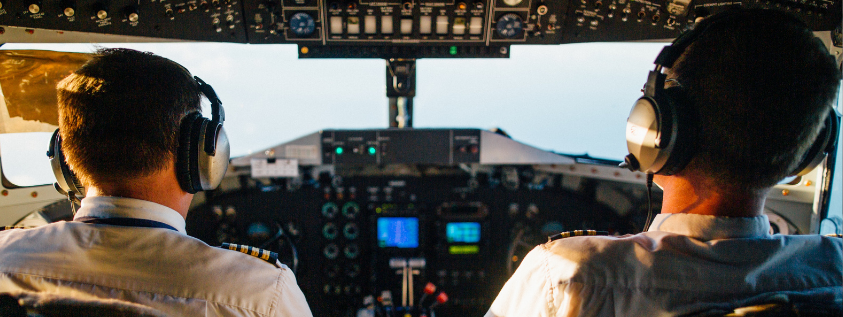The technological sophistication achieved by commercial aviation has allowed a large part of the pilots’ workload to fall on computerised systems, which allows for greater reliability, immediacy of response and greater comfort during flight. Implementing new technologies and knowing how to adapt to them is essential, just as it is essential that they have the right resources to deal with any situation when a failure occurs. For this reason, since April 2019, the European Aviation Safety Agency (EASA) has made it mandatory for all pilots engaged in commercial aviation to hold a UPRT rating. The UPRT (Upset Prevention and Recovery Training) course has been taught at EAS Barcelona since 2018, being the first ATO (Aviation School) to receive authorisation from EASA to teach this course in Spain.
UPRT (Upset prevention and recovery training) is a combination of theoretical knowledge and flight training. Its objective is to provide the pilot with the necessary skills to prevent and recover from situations where an aircraft unintentionally exceeds the normal flight envelope. In this course, both physical and psychological training is essential, in order to be able to adapt to the situations that may arise in an aircraft in abnormal flight situations.
In order to ensure learning at the right time of pilot training there are three UPRT modules:
– Basic course: Introduces exercises with the aim of being integrated into the CPL and ATPL courses (modular and integrated courses), and into the MPL training course.
– Advanced course: Includes at least five hours of theory and at least three hours of dual flight in an aircraft, with the aim of improving psychological and physiological endurance in upset conditions. This more complete modality is the one taught at EAS Barcelona.
– Class or type specific UPRT: During this course the relevant specifications for each case or type of aircraft are studied. It is given during the Aircraft Type Rating course, which is carried out after being contracted by an airline in the event of not previously having the rating to fly the model for which it has been contracted.
In UPRT courses, there are normally three types of exercises:
– Awareness and prevention exercises to achieve a basic understanding of aircraft characteristics and the situations that can result from a failure.
– Manoeuvre-based recovery exercises designed to develop correct recovery techniques.
– Scenario-based exercises to train performance in real-life situations.
In order to be able to perform the UPRT training satisfactorily, specific aeroplanes are required that allow basic aerobatic manoeuvres, such as, for example, the Cessna 150 Aerobat model like the ones we have at EAS.
Being a professional pilot requires an in-depth knowledge of the aircraft, its operation, its processes and being prepared to react in any situation of stress and failure. Training like this is essential in the training of a pilot and that is why EAS Barcelona was the first to implement it in Spain.
Being prepared at all times for any contingency, especially when the anomalous situation is due to a computer failure, is the responsibility of everyone involved in the operation of an aircraft. Providing the necessary training and the tools to provide this preparation, with the required degree of excellence, is the task of a training centre such as EAS Barcelona.
